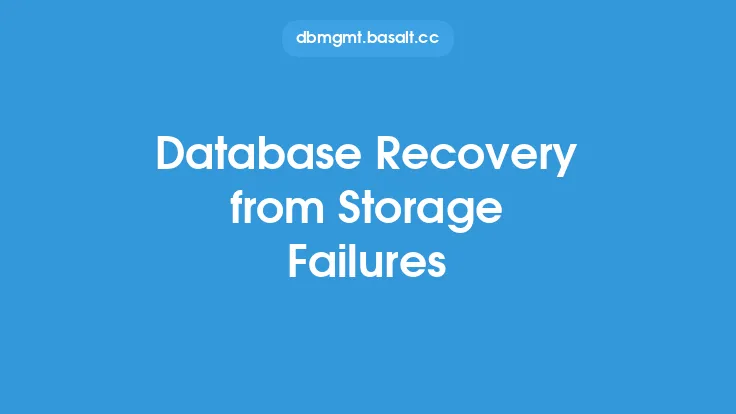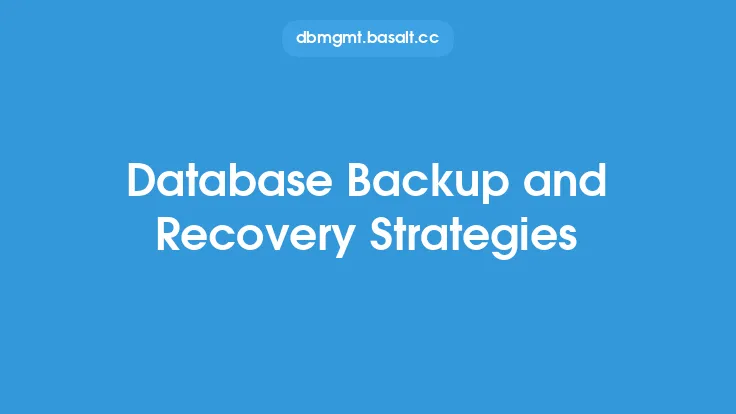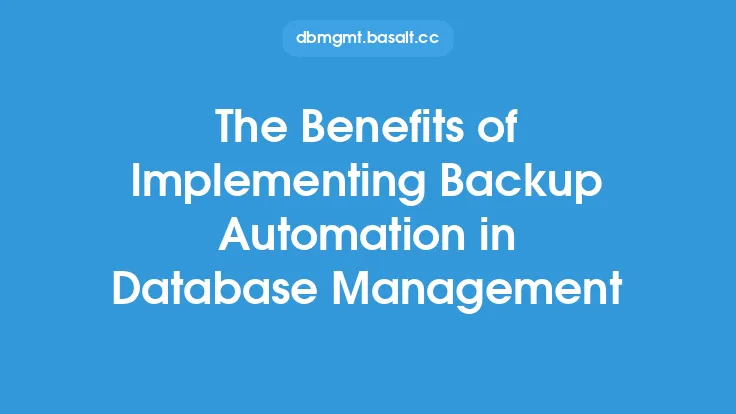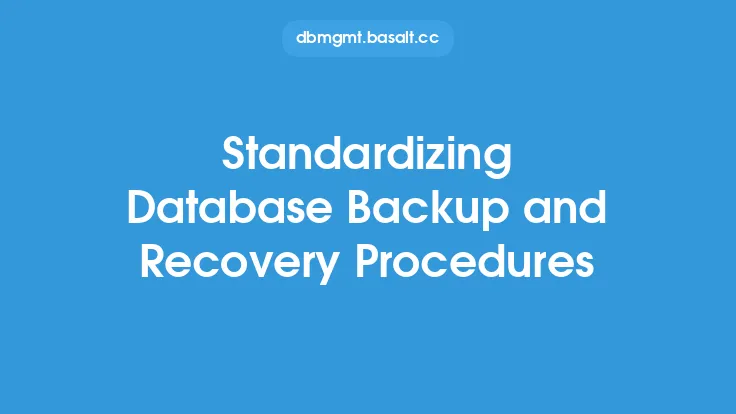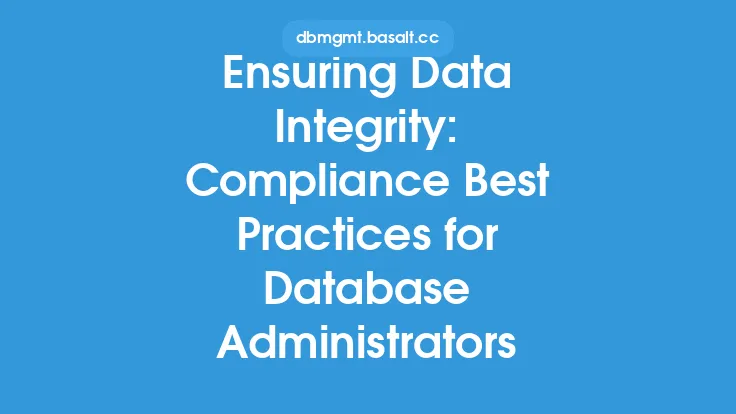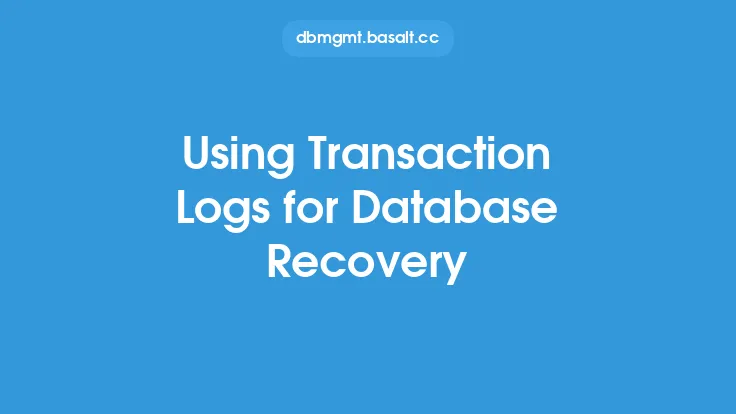Recovering from database corruption is a critical process that requires careful planning, execution, and attention to detail. Database corruption can occur due to various reasons such as hardware failures, software bugs, power outages, or human errors, and can result in data loss, inconsistencies, or even complete database failure. In this article, we will discuss the steps and techniques involved in recovering from database corruption, and provide guidance on how to minimize data loss and ensure business continuity.
Understanding Database Corruption
Database corruption refers to the state where the database becomes inconsistent, inaccurate, or incomplete, making it impossible to access or retrieve data. Corruption can occur at various levels, including physical, logical, or semantic. Physical corruption refers to damage to the physical storage media, such as disk failures or bad sectors. Logical corruption refers to inconsistencies in the database's internal structures, such as index corruption or page corruption. Semantic corruption refers to inconsistencies in the data itself, such as invalid or inconsistent data values.
Identifying Database Corruption
Identifying database corruption can be a challenging task, as it may not always be immediately apparent. However, there are several signs and symptoms that can indicate corruption, including:
- Error messages or warnings during database operations
- Data inconsistencies or inaccuracies
- Slow or poor database performance
- Unexplained changes to data or database structures
- Failure to access or retrieve data
- Database crashes or failures
Preparing for Database Recovery
Before attempting to recover from database corruption, it is essential to prepare the environment and gather necessary information. This includes:
- Gathering database backups and transaction logs
- Identifying the type and extent of corruption
- Determining the root cause of corruption
- Assessing the impact of corruption on business operations
- Developing a recovery plan and timeline
- Assembling a team of experts, including database administrators, developers, and technical support staff
Database Recovery Techniques
There are several database recovery techniques that can be used to recover from corruption, including:
- Restore from backup: restoring the database from a previous backup
- Transaction log replay: replaying transaction logs to recover changes made since the last backup
- Database repair: repairing corrupted database structures or data
- Data reconstruction: reconstructing corrupted or missing data
- Database rebuild: rebuilding the database from scratch
Tools and Technologies for Database Recovery
Several tools and technologies are available to aid in database recovery, including:
- Database management system (DBMS) built-in tools, such as backup and recovery utilities
- Third-party backup and recovery software
- Data recovery tools, such as data carving or data extraction tools
- Cloud-based backup and recovery services
- Database-as-a-service (DBaaS) platforms
Best Practices for Database Recovery
To ensure successful database recovery, it is essential to follow best practices, including:
- Regular backups and testing
- Implementing robust data validation and verification processes
- Maintaining accurate and up-to-date documentation
- Developing and testing disaster recovery plans
- Providing training and support for database administrators and technical staff
- Continuously monitoring database performance and health
Challenges and Considerations
Database recovery can be a complex and challenging process, and several considerations must be taken into account, including:
- Data loss and inconsistencies
- Business continuity and downtime
- Security and access control
- Compliance and regulatory requirements
- Technical expertise and resources
- Cost and budget constraints
Conclusion
Recovering from database corruption requires careful planning, execution, and attention to detail. By understanding the causes and symptoms of corruption, preparing the environment, and using the right techniques and tools, it is possible to minimize data loss and ensure business continuity. Following best practices, such as regular backups and testing, and providing training and support for database administrators and technical staff, can help prevent corruption and ensure successful recovery. By being proactive and prepared, organizations can reduce the risk of database corruption and ensure the integrity and availability of their critical data assets.
